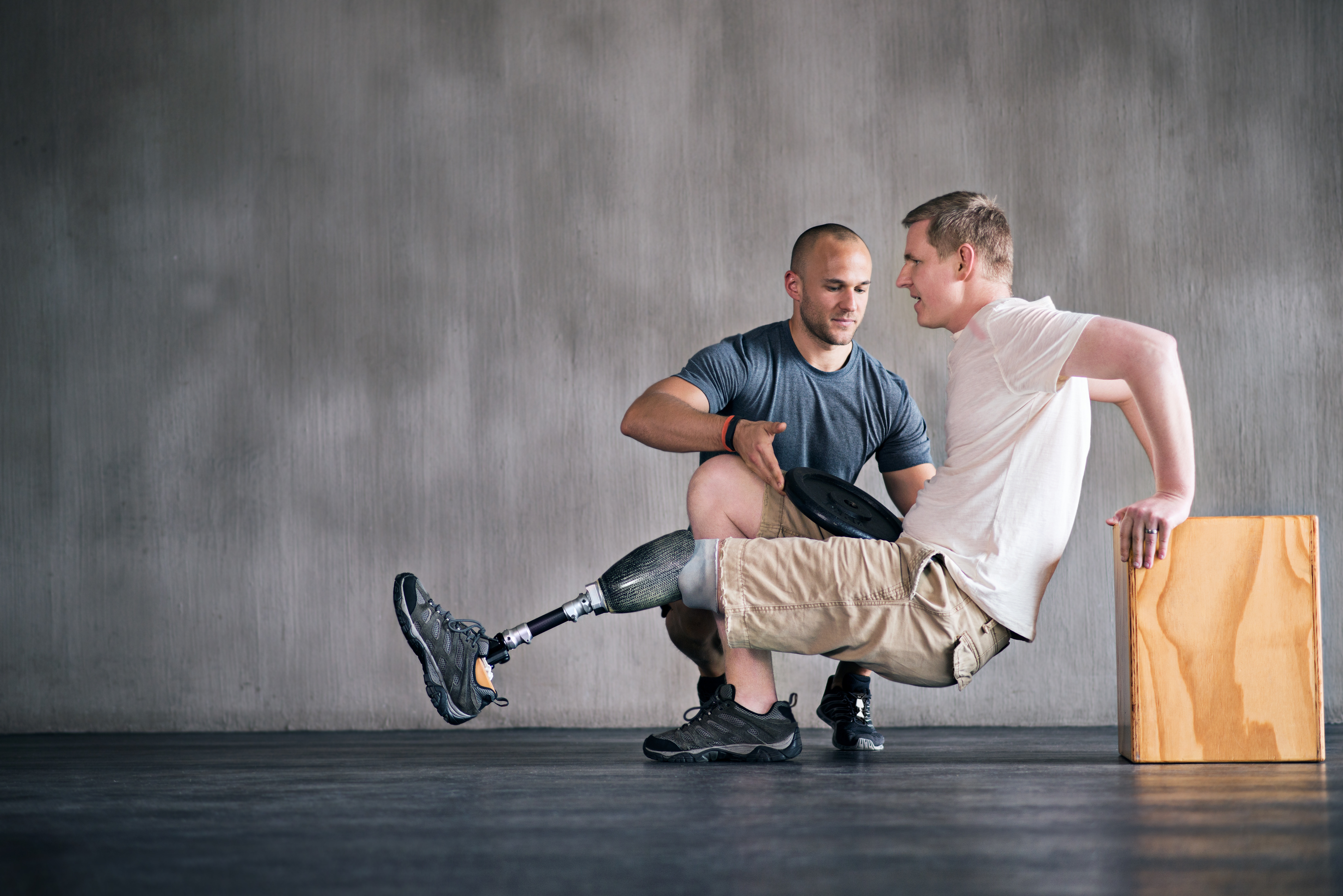Written by TMRnerve.com Staff

If you are thinking about TMR nerve surgery, understanding what pain to expect after surgery is critical. TMR nerve surgery can help reduce post-amputation nerve pain by reconnecting amputated nerves to nearby nerves and, eventually, muscle targets. If you think about nerves as electrical wiring, TMR helps to ‘complete the circuit’ by reconnecting the ‘live wire.’
Focusing on some basics of what it’s like to experience amputation, as well as what to expect after TMR nerve surgery, helps give patients peace of mind.
For people facing limb loss, there is a key difference in medical care that must be understood up front so their choices and plans are informed. “Unfortunately, people who go through an amputation don’t often have a team of specialists who are discussing their case,” says Kyle R. Eberlin, MD, Harvard Plastic Surgery Residency Program, Associate Director, MGH Hand Surgery Fellowship, Massachusetts General Hospital, Harvard Medical School. Amputations just have not been viewed as procedures requiring a team approach, he noted.
Eberlin adds, “As an example, a cancer patient will most likely have a medical oncologist, surgical oncologist, radiation oncologist and other experts who are coordinating their journey.” For an amputee, this could include a plastic surgeon, an orthopedic surgeon, a physiatrist, a psychiatrist, a pain management specialist, a physical therapist and a prosthetist. Rarely are these specialists part of the same team, except for a few centers in major US cities that provide this kind of holistic approach.
It’s important for patients to be connected to an integrated, interdisciplinary center where they will receive the comprehensive, coordinated care they need. A physician directory can help get you started. Resources like The Amputee Coalition also have a wealth of information.
There are two different patients seeking TMR surgery — those who have chronic post-amputation pain and those who are having the amputation and TMR procedure at the same time. This means there are separate approaches to preparation and different recovery paths.
Stephen J. Kovach, MD, FACS, Herndon B. Lehr Endowed Associate Professor of Surgery Associate Professor, Division of Plastic Surgery, Associate Professor, Department of Orthopaedic Surgery, University of Pennsylvania Health System, says, “The goal of TMR is to get patients pain free either from neuropathic [neuroma] pain or lessen or prevent their phantom pain. In phantom limb sensation, our goal is to alleviate pain. We see patients for TMR from all clinical avenues - amputees, previous surgeries, not just extremities, not just amputees.
“We try to set the right patient expectations for recovery, especially with regard to pain relief. It is typical for patients to experience a transient increase in pain just following TMR surgery, and that this pain lessens over time.”
Much is done to ensure the patient wakes up from surgery pain-free. Adjunctive maneuvers are performed to give the patient a sense of what it was like before their pain and what it can be like again. Amputations are performed under general anesthesia with multimodal pain therapy, nerve pain blockers, neuromodulators, and narcotics, as needed. Kovach says, “We want them to be up and moving soon as possible. As soon as we can we transition them to oral therapy, wean them from pain therapy, that’s good. Ultimately the goal is to have a functional residual limb that is pain free.”
Surgical techniques have evolved over time as medical understanding and training became more sophisticated. Up until recently, however, amputation surgery did not. Methods had not changed much since the Civil War. The surgery was often performed by a more junior physician, and not much thought was given to surgical techniques that could have had lasting impact on mobility, pain and prosthetic use.
Contemporary amputations are best summed up by Dr. Eberlin: “The thought was often that we were getting rid of a problem, ending functionality. Today we know that we need to look at amputation as the beginning of functionality. And we have to think about all of the tools we have in our toolkit to make sure the patient receives holistic care from the start.”
Eberlin and other plastic surgeons who perform TMR nerve surgery strive to have the patient wake up totally pain free. “For some, it's the first time in a long time they are pain free.”
The level of pain after initial TMR nerve surgery is dependent on the timeframe since the amputation. If someone had an amputation and has established pain, TMR can often make the pain better but not disappear totally. When someone has an amputation scheduled, and TMR nerve surgery is done at the time of the procedure, chronic pain is far less likely because the brain has not established this chronic pain. Eberlin says, “The sooner we do it, the less likely the patient is to have it.”
Today, practitioners are perceiving amputation as a procedure that does not have to be painful. Methods are increasingly sophisticated with doctors like Kovach and Eberlin making advances in the field.
TMR can make a difference for amputee patients through improved prosthesis control and pain relief. If you’re interested in learning more, find a doctor who performs the procedure here.
Written by TMRnerve.com Staff
Targeted Muscle Reinnervation (TMR) is a surgical treatment that is gaining acceptance for nerve pain associated with amputation.
TMR is not a treatment option for patients with spinal cord injuries, brachial plexus injuries, or who are generally not healthy enough for surgery. The procedure does present typical risks of surgery. Patients may experience a temporary increase in pain as part of the nerve healing process. Your physician will help you determine whether TMR is right for you.
Gregory Dumanian, MD, is medical director of TMRnerve.com. He is a paid consultant of Checkpoint Surgical, Inc.
Copyright Checkpoint Surgical, Inc. 2025 Privacy Policy